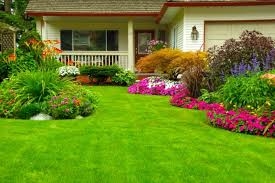Benefits of Drought Resistant Grass Seed

Nothing pleases the sight and makes the home as beautiful as a nicely maintained lawn. It gives the home a natural feel that is so rare in the artificial life of the 21st century. Especially is this true for those who own homes in urban areas. Indeed many urban home owners try to give their homes as much natural flavor as they can. But the cost of maintaining such a lawn all year round is daunting. Nevertheless, there is good news. The lawn care industry has developed new grass types that can better withstand hotter, drier conditions thus cutting the costs of maintenance. These are the drought resistant type grasses.
Benefits of Drought Resistant Grass Seed
Ordinary grass generally requires a lot of water to keep green all year round. The situation is worse during the summer season. An average-sized lawn can require tens of thousands of gallons of water per summer to stay green. And for those who live in temperate zones where the temperatures are generally high, coupled with bouts of dry spells throughout the year, the cost of watering alone can be a pinching expense. Drought resistant grass varieties offer the solution. They can withstand hot and dry conditions without requiring so much watering thus significantly cutting your costs in this line.
Secondly, conventional grass seeds grow relatively faster, thus requiring frequent mowing. On the other hand, drought resistant grass seeds generally grow at a slower rate, requiring less mowing, thus saving extra time and money.
Moreover, some drought resistant grass varieties like Bahai resist disease and insect infestations. This means, first, that the cost incurred in pest and disease control is waved thus saving you further energy, time and money. Secondly, the environmental pollution that results from the use of those chemicals, plus the relative risks associated with them is an extra curse you escape by planting drought resistant grass.
Further, some drought resistant grasses can grow in either sunny or shady environments and ccan also tolerate moderate amounts of traffic. Therefore they can be grown under trees and they will also save you the “keep off grass” rule.
Still others can withstand acidic conditions and even grow well in infertile soil, thus making them suitable for such conditions where ordinary grass would generally do poorly. This also means that the costs of fertilization and the accompanying environmental risks are waved.
Some Types of Drought Resistant Grass
There are a variety of drought resistant grasses adapted to the varied needs of society. Most common ones are: Cutting Edge Grass Seed, Bermuda, Bahai, Zoysia, Centipede, Fine Fescue Grass and St. Augustine. Bermuda resists severe drought and is very durable, whereas Bahai has the best wear resistance, grows in acidic and infertile soil and resists disease. Generally, choosing the best drought-resistant grass for your lawn will depend largely on where you live. Nevertheless, Cutting Edge Grass Seed provides all of the low maintenance characteristics while maintaining the expected beauty and sustainability.
Drought resistant grass seeds are preferable to ordinary grasses because of their relatively lower cost of turf management, disease resistance and enduring traffic. Planting a grass type that is more drought-resistant will save you energy, money, time, and water.
